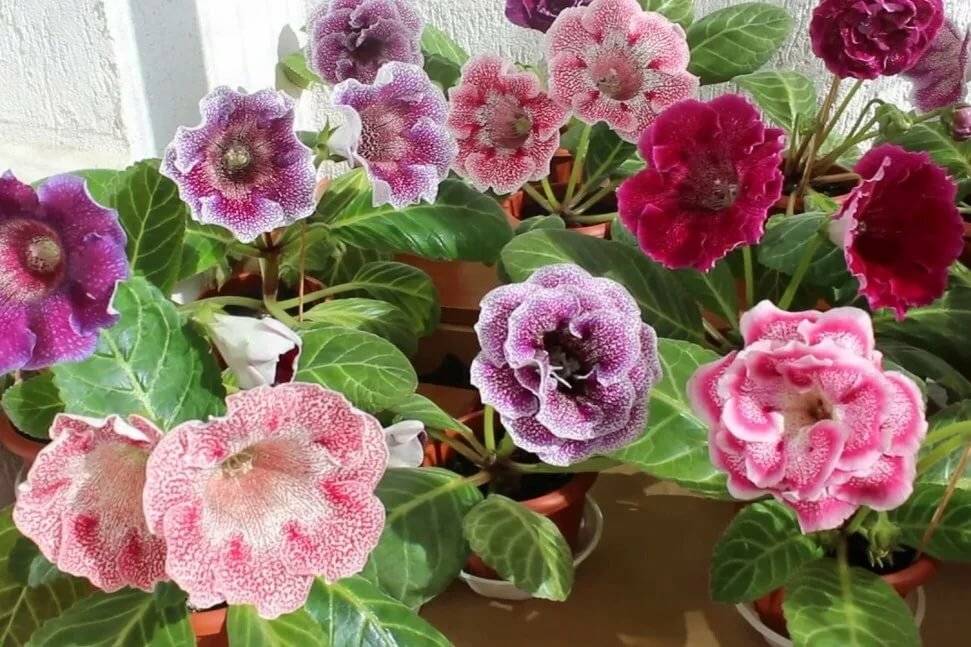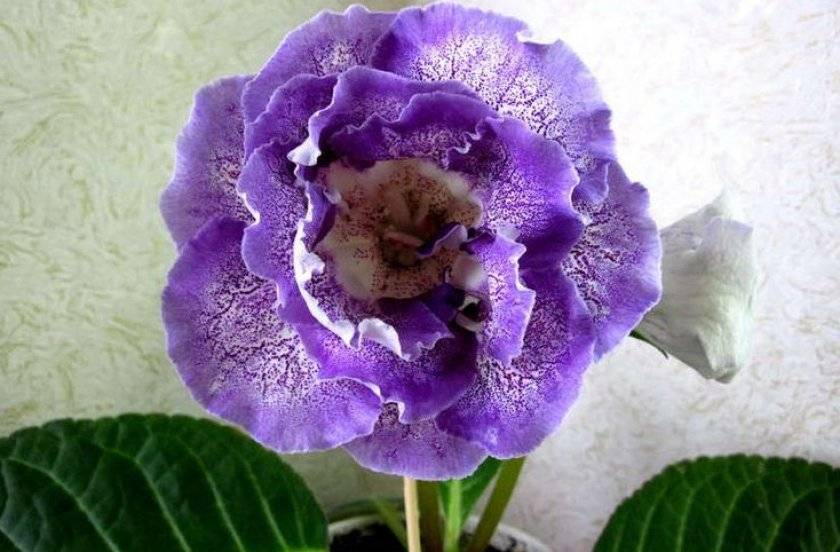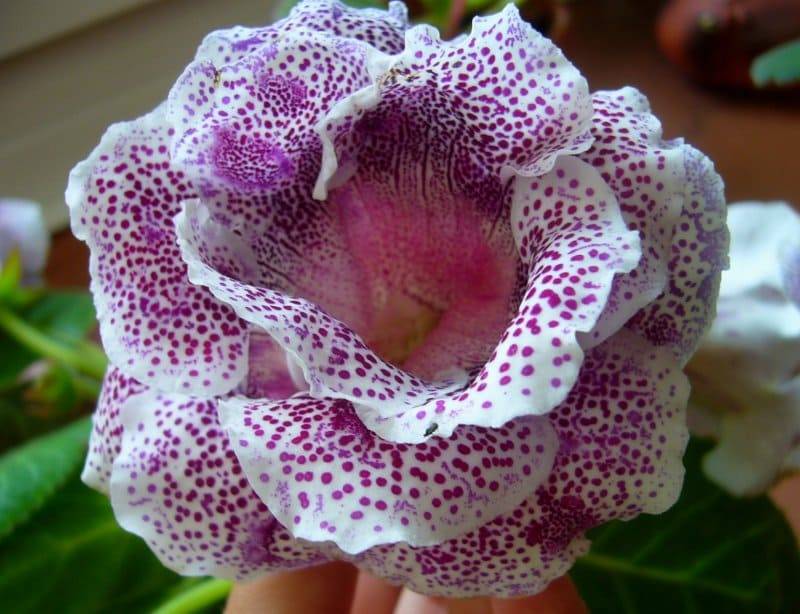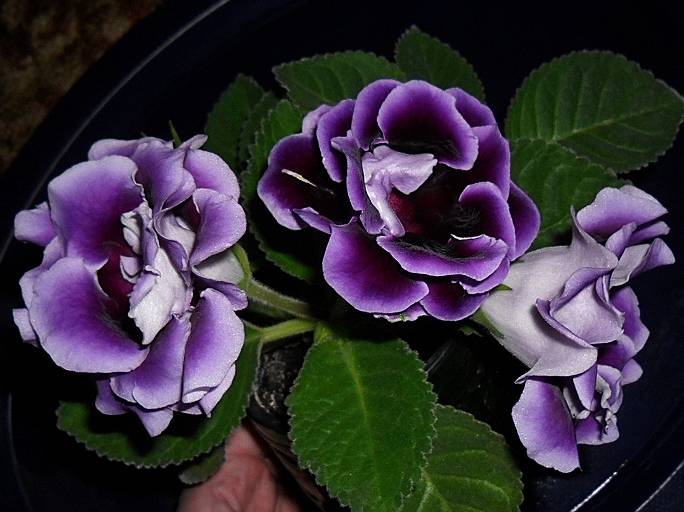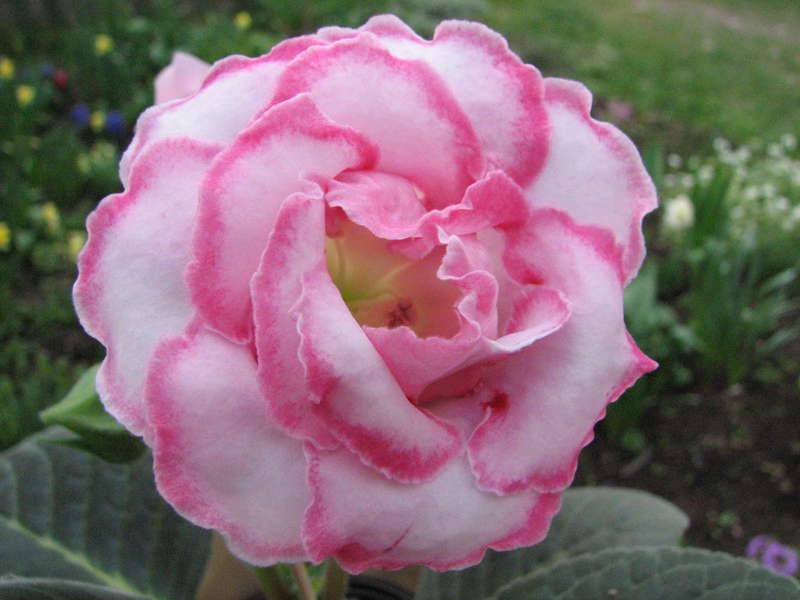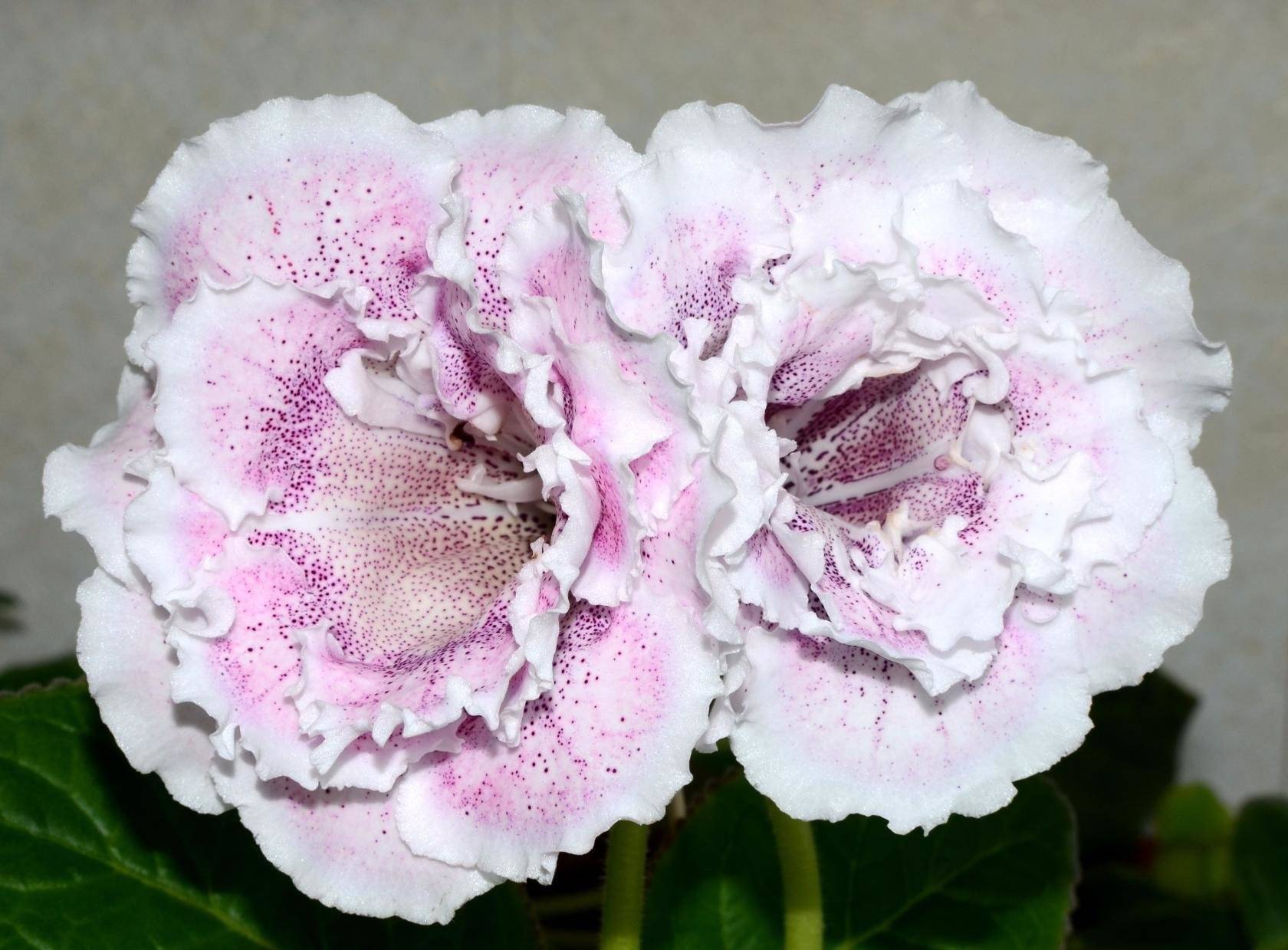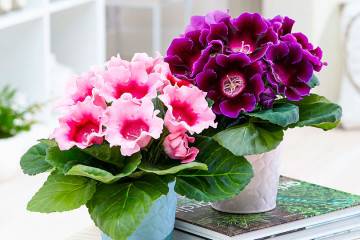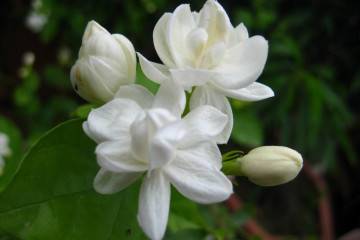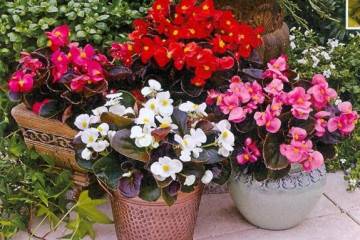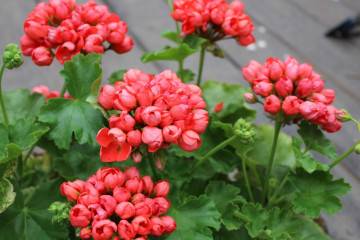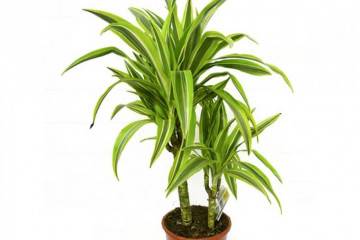Gloxinia terry - popular flower varieties
Content:
Even the most fastidious florist will be able to find "his" variety of terry gloxinia among the variety of species that exist today. This beauty is able to charm everyone. The first flowers were mainly in three colors: purple, lilac, red. Thanks to the painstaking work of experienced breeders and simple amateur gardeners, today you can see gloxinia with an incredible variety of shades and shapes of their buds.
Gloxinia terry - what is this flower
The representative of the Gesneriev family grows in Central and South America on rocky terrain or in deciduous forests. There are shrubs up to 70 cm in height and perennial herbaceous plants, the shoots of which creep along the ground.
Brief description, history of origin or selection
Gloxinia terry is a perennial crop with tuberous roots. Its leaves are oval, rough, outwardly similar to dark green velvet. The shape of the flower resembles a bell or, in some cases, a slipper. The bud, with the complete dissolution of the double petals, has a similarity to a rose. The stem of the indoor culture is dense, low.
For the first time, culture was brought to Europe from Brazil by naturalist Peter Gloxin in 1785. She became named Gloxinia speckled. In the early 1800s, another species of this plant was brought from America, which was named Gloxinia beautiful. In 1825, a similar flower fell into the hands of breeder Wilhelm Sinning. It was distinguished only by the root system - it was tuberous. The plant began to bear the name Sinningia the beautiful.
Later it turned out that synningia belongs to the Gesneriev family and is not a new species, as previously thought. Therefore, this culture has two names, although the familiar Gloxinia stuck more. But the mention of the name Wilhelm Sinning can be found in the name of some varieties. After all, it was his "brainchild" that became the progenitor of modern gloxinia hybrids, which are a real mix of different color palettes.
Popular varieties of terry gloxinia, the secrets of a good choice
In total, there are more than 75 varieties of gloxinia varieties. They differ in their color palette, shape and size of buds. All hybrids are impossible to study. But among them are the most popular varieties:
- Gloxinia Poetics
Gloxinia is white in the center. Further, lilac-purple specks form a mesh pattern, which turns into a wide border of a rich purple hue.
- Gloxinia Madonna
The snow-white buds are bell-shaped.Towards the edges, double petals form a fluffy "skirt", which makes the flower even more attractive.
- Gloxinia Cleopatra
Dark cherry dots, against a background of slightly pink petals, form a semblance of a leopard print.
- Sinningia Prince
It is notable for its deep purple, almost black buds. Her petals are more like velvet.
- Gloxinia Panther
This gloxinia is purple, but the color is less intense than the previous cultivar. On its petals, you can see slightly light specks.
- Gloxinia Brocada
There are two main flowers: blue and red. The first has a rather cornflower blue hue. The second one is distinguished by bright red petals, it may have a white canvas, but it depends on the varietal affiliation.
- Sinningia Minx
This gloxinia is white with a pink border, framing its petals with a thin light thread. Outwardly, it resembles a flower made of porcelain.
- Gloxinia Sharm
The background of the inflorescence is milky white, pink specks are clearly visible on it, smoothly turning into a wide raspberry-pink border.
- Gloxinia Chantilly
Pink sprays on a background of white petals form a beautiful mesh pattern. The edges of the buds are light.
- Gloxinia Little Red Riding Hood
The neck of the flower is white with small crimson specks. The flower itself is a rich red. The edge is raspberry pink.
- Gloxinia Laura
Its inflorescence looks as if a six-petal white flower was painted and the edges were circled with a purple or pink marker.
- Sinningia Lady Hamilton
This representative of gloxinia is pink, has a creamy core, which turns into a light pink hue from the middle, while the border is pale pink. The entire bud is strewn with bright pink peas.
- Gloxinia Scarlet
It has many dark pink petals ending in a well-defined white border.
- Sinningia the Pink Tale
The neck of this culture is light, the center is painted in a raspberry hue, then the petals brighten and have a pale pink color.
- Gloxinia Royal
The bud is bell-shaped, has six petals. A deep purple flower. Its inner part is lighter, strewn with purple specks.
- Gloxinia Tiger Empress
Her colors are gorgeous. The delicate pink flower is strewn with many specks, forming a pattern similar to a brindle color.
As you can see from this list, there are a large number of shades of sinningia. You can find a shade for every taste.
For example, if you need yellow terry gloxinia, you should pay attention to one of the hybrid varieties called Luna. If you need a flower of blue shades, Gloxinia Blue Lagoon is an excellent option.
How to care for terry gloxinia at home
Gloxinia terry is a wonderful flower for growing at home. But before acquiring a plant for your flower garden on the windowsill, you should first find out how to properly care for it.
Illumination and temperature conditions
Gloxinia hybrid is a very finicky plant. She does not tolerate direct sunlight, but at the same time reacts painfully to a lack of light.
Also, this plant does not tolerate drafts at all. Large temperature drops are also bad for her.
During budding and flowering, the air temperature should be in the range of 20-22 ° C. During hibernation, a comfortable temperature should be about 10 ° C.
Watering rules and humidity
It is highly undesirable for the leaves to get water. Otherwise, the root collar will begin to rot.
Gloxinia loves moist soil, but care should be taken not to overflow.Otherwise, root decay will begin. Watering should be along the edge of the pot or through a drip tray.
The water should be slightly warmer than room temperature and must be defended. The next watering is carried out when the soil dries up.
If the air in the room is dry, you can spray it with water around the crop, but care must be taken that moisture does not get on its leaves.
Top dressing and soil quality
The soil should be loose and light. A sufficient amount of mineral and organic fertilizers must be added to it. A special soil is suitable for planting begonias, saintpaulias, violets.
The plant is fed once a week with complex fertilizers. In no case should nitrogenous fertilizers be applied during the flowering period. In autumn, they are fed with superphosphate and potassium monophosphate. This stops feeding.
Flower container size
They choose not very deep pots, but wide enough, since the roots of sinningia grow in breadth. A drainage layer up to 3 cm is poured onto the bottom of the container. You can take eggshells, pebbles, and polystyrene as it.
Pruning and replanting
After the terry gloxinia fades and its shoots die off, the aerial part should be cut off, leaving only 1.5 cm. The tubers are removed, treated with fungicide, then put into a special box and sprinkled with vermiculite.
It is necessary to transplant gloxinia in February.
This process looks like this:
- The plant is removed from the container. It is not necessary to free the tubers from roots and soil.
- Take a container larger than the previous one and fill up the drainage.
- Place the plant in a pot, sprinkling the prepared soil on the tubers until they are half buried in the soil.
It is necessary to additionally feed the transplanted plant with special fertilizers for its rapid growth and recovery.
Flowering features
During budding and further flowering, sinningia requires special care. The lighting should be adequate, but the crop should not be exposed to direct sunlight. Otherwise, the plant will get burned. Nitrogenous fertilizers cannot be applied during this period.
A period of activity and rest
Gloxinia blooms for 5 months, some hybrids are able to bloom longer.
The first flowering is usually not so lush and plentiful, especially if it happened ahead of time. But further flowering is distinguished by the abundance and size of the peduncles. In August, gloxinia stops blooming and begins to prepare for a dormant period that lasts 3-4 months.
Types and shape of flowers
Gloxinia buds can be bell-shaped or shoe-shaped. The petals of the plant are slightly wavy, or vice versa - double. Depends on the varietal affiliation of a particular flower. The structure of the petals is smooth or velvety.
Flower reproduction methods
Gloxinia is not very difficult to propagate. This can be done in several effective ways.
Seed propagation
This method is perhaps the most laborious, but gloxinia seedlings are more viable. Use for sowing seeds purchased from a store or collected by yourself. It is better to purchase seeds in granules.
It is necessary to sow them from January to February. After planting, seedlings appear in a month. They are seated in separate containers when 2 leaves appear on the seedling.
Leaf propagation
In the fall, take a fleshy healthy gloxinia leaf. The stalk is buried in the soil so that it lies at an angle of 45 °.
After the leaf gives roots, you need to transplant the plant into a nutritious substrate for further growth of its roots.
Tuber propagation
A tuber is taken that has 2-3 sprouts and whose size is not less than 6.5 cm. Then cuts are made where one or more sprouts should be visible. These sections need to be disinfected and dried, and then treated with garden varnish.
The prepared tuber is planted in a container and buried so that the sprouts are at the soil level.
Reproduction by peduncles
Peduncles of simple gloxinia take root better. But this breeding method can be used for absolutely all varieties.
To do this, cut the peduncle of the plant so that it does not exceed 7.5 cm. Then it can be placed in a glass with a small amount of water or planted directly into the ground.
Reproduction by stepsons (processes)
The stepson is carefully cut after flowering. Place it in a glass of clean warm water. The water is changed periodically.
After the roots appear, the plant can be transplanted into a container.
Propagation by leaf cuttings
It is obtained by dividing the stem from the central vein. The planting process is the same as for leaf propagation. But the stalk is planted vertically. They rarely need to be watered.
Growing problems, diseases and pests
Gloxinia are most susceptible to the following fungal diseases:
- tracheomycosis;
- late blight;
- powdery mildew;
- gray rot;
- phyllosticosis;
- chlorosis;
- root rot;
- anthracnose;
- rusty mushroom.
This culture and insect pests are not bypassed. Gloxinia often suffer from whiteflies, scale insects, thrips, mealybugs, cyclamen and spider mites.
How to deal with them
Fungicides, insecticides and various chemical agents are effective in the fight against plant diseases and pests. But if any fungal infection struck gloxinia, this means that proper care of this plant has not been carried out. It is necessary to observe the temperature regime, monitor the humidity, feed on time and water according to a specific schedule.
Gloxinia varieties and species differ significantly from each other. But the requirements for caring for this crop does not in any way depend on its varietal affiliation. If you approach this matter responsibly, the flower will delight you with abundant flowering every year.
